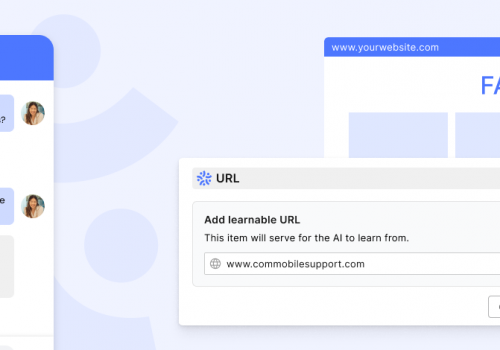Identify Micro-Trends. Identifying trends is a vital part of how you stay competitive as a business. Customer behavior and expectations shift as the world around us changes. Sometimes this happens due to big jumps in technology; sometimes, it happens because of cultural or social shifts (social movements gaining traction). Sometimes, it happens because the world has fundamentally changed, like with the 2020 coronavirus pandemic. One thing you can always count on is that your customers are ever evolving, so you should be too. If you fail to identify and adapt to the most recent trends, you can end up being left behind while your competitors race ahead, and that’s a position no company wants to be in.
What are Micro Trends?
Let’s start with megatrends. Megatrends are significant overarching trends that change societies and industries. Microtrends all the patterns you notice in the detail. They’re the small shifts that have the potential to cause significant changes or small changes. By analyzing micro-trends, you can prepare for the future and enter new products to market before your competitors.
Why Microtrends are Important?
To identify why microtrends are so important, let’s look at some companies to failed to spot micro-trends and instead persevered with a rigid mindset.
Kodak
Kodak were big players in film-based cameras and failed to recognize the disruptive potential of digital cameras. It wasn’t that Kodak was totally in the dark on this issue. In 1975, when the first digital camera was invented, the engineer of this technology, Steve Sasson, said Kodak’s corporate response was, “that’s cute, but don’t tell anyone about it”. Later, in the 1980s, Kodak would invest in research on digital cameras to determine whether they would disrupt the industry and lead people to abandon film. This research proved to be accurate – they believed that digital cameras would eventually replace film cameras, but it would take some time. From the study, Kodak concluded that they had approximately ten years to prepare for this transition.
However, they didn’t prepare – at least not properly. They invented a digital prop for their film cameras, spending over $500 million on this product from concept to launch. It wasn’t a success. Why? Because people either want a film camera or a digital camera.
Nokia
In 1998, Nokia was the best-selling mobile phone brand in the world. In 2007, Apple introduced the iPhone, and although Apple’s market share was a measly 5% by the end of the year, they were primed for success. Apple’s operating system was superior to anything Nokia had at the time. However, instead of focusing on creating an even better phone than the 2007 iPhone, Nokia kept pushing out products with big marketing but little substance. They relied on their name and their position in the market instead of recognizing that consumers preferred the Apple experience. Due to this failure to spot the micro trend, Nokia’s market value declined approximately 90% in just six years.

What Are Some Micro Trends Happening Across Industries Today?
To be able to spot a micro trend, you have to have a clear understanding of what one is and how to spot it. Some examples of megatrends are digitization or digital transformation, globalization, aging populations, widespread internet usage, increased connectivity. You can also have megatrends within specific industries. For example, in customer service, megatrends could be the growing adoption of AI and the evolution of customer-agent interactions. Now let’s look at some micro trends happening today across different industries.
Smart Risk Prevention
With the growth of AI, IoT, and machine learning, some companies are inventing wearable devices or utilizing technology in existing wearables to detect health issues in their early stages. For example, Dutch start-up SkinVision offers an app that uses your phone’s camera to detect changes in the skin that could indicate skin cancer.
Decentralization
With connectivity going up, privacy is going down. In a world where data breaches happen at an alarming rate, people are starting to become more and more concerned about the information they share. They want the benefits of sharing data (hyper-personalization), but not the risks of giving that data away. They don’t want their credentials and contact details ending up on a database on the dark web. Increasingly, more companies and people are interested in decentralized networks and databases. Instead of having one company hold the keys to all the data, decentralization allows for hundreds of keys to work together to protect data. There’s no single point of weakness, so there’s no single failure.
Soft Skills are Becoming More Important Than Ever Before
We’re in the digital age, and AI is booming. It’s not too far into the future that we won’t need coders because machine learning algorithms will do a better job than human coders. Right now, having technical skills like adeptness in programming languages is a prominent marketable skill. You can demand higher pay than someone without a technical discipline. However, as these roles start to get replaced by AI, soft skills will become more critical. That’s not to say there won’t be technical jobs in the future – there absolutely will be. However, across the board, soft skills are going to come into focus. Human work is going to revolve around the thing’s humans are better at than robots, namely, creativity, adaptability, and relationships.
What are soft skills?
- Adaptability
- Communication
- Creative thinking
- Dependability
- Work ethic
- Motivation
- Conflict resolution
- Teamwork
Most contact center agents already excel in soft skills, but their skills are typically considered less economically lucrative than hard skills in today’s world. This will change in the future.

How to Identify Micro-Trends
Take Advantage of Industry Research
Remember, you don’t have to go it alone. Companies like Gartner, Nielsen, IPSOS, Dynata conduct extensive and detailed market research every year, and you can use this research to your advantage.
These companies provide original research into all and every segment across industries, so it’s an invaluable tool. All you need to do is take the time to read this research and determine how it applies to your business. The best way to do this is to make it a habit. Dedicate time every day, week, month, or six months to sit down and look at industry research. Block out all other distractions and just read and make notes.
After reading and taking notes, look at your customer service data. Can you see any of the trends starting to happen in your customer base? Doing this allows you to adapt with plenty of time. Remember, projects are a huge time commitment and often run-over the deadline. If you spot a trend, the best time to act is yesterday.
Pay Attention to Thought Leaders and Industry Influencers
It’s critical that you pay attention to thought leaders and industry influencers. Why? Not only do they spot essential changes in the industry and call them out, but they also spark new change. Thought leaders are respected in the industry, and therefore, they have massive influence. They can cause trends to happen with their content. It’s a good idea to read blog posts, and LinkedIn posts by your industry thought leaders and monitor the response to those ideas. How do people feel about the ideas they share? Are they sparking excitement for a new way of working? If so, it might be time to adapt your strategy.
In a more general sense, it’s essential to keep up with what people in your industry say. You can do this by listening to podcasts and youtube videos, as well as relying on LinkedIn. While LinkedIn is a useful tool, it does have a corporate edge to it. On less formal platforms or mediums, people speak more freely and in a more conversational way. These people are still impacting the industry, and you should pay attention to what they’re saying.
Knowing What Trends Will Stick
A primary reason why companies fail to respond to trends is fear. They are afraid of sinking time and money into a new product or strategy only to find that it doesn’t work because the trend was a fad.
One thing to keep in mind is that responding to a trend, even a temporary one, can reap long-term benefits. For example, let’s consider coronavirus. The pandemic has caused massive changes in the way we work and the way we interact with companies. Most businesses have ramped up their digital transformation efforts in the last year as remote working became a necessity.
While it’s unlikely that most offices will be 100% remote into the future, remote working will likely be more common and accessible than ever. The benefits of remote working, for both workers and businesses, are just too great. Companies save on rent and utility bills, and workers enjoy a better work-life balance. The companies that thought, “well, we don’t want to invest in digital transformation more heavily, and we’ll just make do with what we have because the pandemic will only be temporary” have made a mistake. Sure, the pandemic will go away, but remote working is here to stay.
You can never know whether a trend is permanent or how long it will last, but that doesn’t mean you shouldn’t engage with them. Business involves risk. The best thing you can do is become as educated on the topic as you can. Do your research. See whether multiple research bodies are noticing the same trends. See whether you can spot these trends in your own data. Do your own research by conducting surveys with your customers. You can even trial scaled-down versions of new products or strategies on a limited set of customers and document the response.
Collect Data!
It’s the age of Big Data, and if you’re not already collecting detailed and extensive data about your customer service operation and your customers, then you’re making a mistake. While paying attention to thought leaders in broader industry research is important, it’s equally critical to know what’s going on in your own business. Your business won’t perfectly match the industry-wide data trends. And this is especially true if you have a niche product or serve a particular segment of customers. By focusing on your own data, you can spot insights that make your company more competitive. You can adopt customer service strategies that other businesses haven’t even thought of yet.















